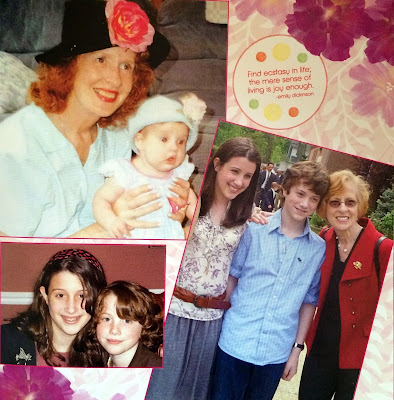Henry Hennessy is my great uncle, my grandfather's brother. Few, if any, will be searching for him on ancestry websites as he has no direct descendants. He wasn't allowed to marry or even fraternize with females at Craig Colony. Despite attempts to simulate a home environment for colonists, as they were called, Craig Colony was an institution specifically designed to keep male and female patients from interacting, with the sexes entirely separated by a rocky ravine. Epilepsy was understood to be a brain disorder by the late 19th century, but there was no effective seizure medication and epileptics faced severe discrimination making it almost impossible to live a normal life. Prior to the establishment of Craig Colony, many were committed to insane asylums.
Henry J. Hennessy was born on January 21, 1901 in Pittsfield Massachusetts, the third son of Patrick Joseph Hennessy and Mary J. (Archer) Hennessy. Patrick and Mary were living in Brooklyn in 1901 as documented on Henry's birth record, their reason for being in Massachusetts at the time is unknown. The birth record includes Patrick and Mary's full names and Patrick's occupation as a coachmen, as well as Henry's date of birth.
Henry had two older brothers, Joseph Hennessy, born in 1898 and Thomas Francis Hennessy (my grandfather) born in 1899. Joseph and Thomas were born in NYC and Patrick's naturalization record indicates he was living in NYC in 1905, as well. Patrick and Mary had a fourth son, John (Jack) Hennessy in 1906. Mary died in December of 1906 due to Meningitis. The 1910 census indicates that Patrick is a widow living with 3 of his sons in New Rochelle. John is not listed on that census and his whereabouts are unknown. Patrick remarried in approximately 1914. Henry Hennessy is included on the 1915 NY State census living with his family in New Rochelle, consisting of his father, stepmother, Annie, his brothers Thomas and John and his newborn half brother, James.
 |
| Groveland, NY - location of Craig Colony |
Craig Colony admitted it's first patient in 1896. It was modeled after a colony in Germany and was originally designed to house 200 epileptic patients with the intent to specifically exclude the insane. Overcrowding quickly became a major problem at the colony with over 1400 colonists in residence in 1911 and over 2700 at it's peak in 1939. The colony had a working farm, craft shops, school and hospital with colonists employed in various trades, so that the colony could be self-supporting. Doctors and administrators thought of the colony as the most humane treatment of epileptics at the time who they still considered to be mentally ill. In one annual report, administrators wrote, “Not all epileptics are unusually irritable, or so much lacking in self-control, nor are all inclined to complain.”
Excerpts of a speech given by a physician in Chicago about 1907 regarding the problems of Epileptic patients and the best way to care for them provides insight into how epilepsy was perceived:
- "If the adult [epileptic] be a man… he is very apt to be dangerous, as you know, and a source of danger to the rest of the family…. An epileptic may get a job between his attacks, but after his first attack, as a rule, his job is gone. No business man wants an epileptic around his premises.
- “Those of you who have been in the home where the mother is epileptic know what a sad and pathetic sight it is. The children are neglected. The whole home is one of the most sad and depressing scenes into which an individual can go.”
- Regarding epileptic child: “Nobody wants him. He is excluded from public schools and, very properly. It is not fair to the rest of the children… that they should be exposed to seeing the contortions and writhings of an epileptic child….He is very apt to be the butt of scorn and ridicule of his playmates. ‘
- “The best way and, the best remedy for this condition is … segregation of all epileptics into a community by themselves… epileptic colony or village.”
Even for those epileptics not institutionalized, marriage was difficult. Laws prohibiting epileptics from marrying were passed in 18 states from 1895 to 1939. The law forbidding marriage among epileptics in the United Kingdom was only repealed in 1970. Principles of eugenics flourished leading to laws requiring sterilization of epileptics as well.
Craig Colony accomplished the goal as sterilization without surgery. A medical director wrote in his report, "One great value of segregating epileptics in an institution like Craig Colony is that it cuts off, to a certain extent, an epileptic progeny, for the disease is handed down from parent to child in 16 percent of all cases.
 The Colony closed in 1968. It is unknown if Henry Hennessy died while a patient at Craig or if he was discharged or transferred to another institution. Like many 'colonists' he appears to have lost connection with his family after being placed in the Colony.
The Colony closed in 1968. It is unknown if Henry Hennessy died while a patient at Craig or if he was discharged or transferred to another institution. Like many 'colonists' he appears to have lost connection with his family after being placed in the Colony.See more at: http://hennessycox.blogspot.com/p/blog-page_4638.html





































